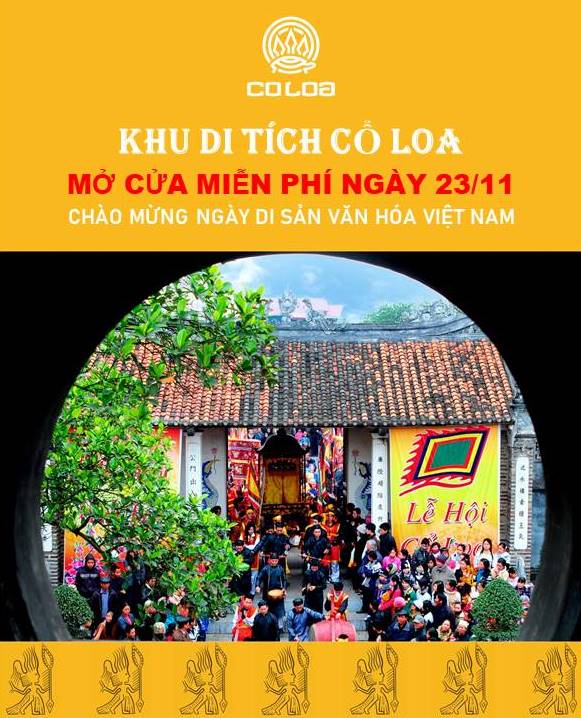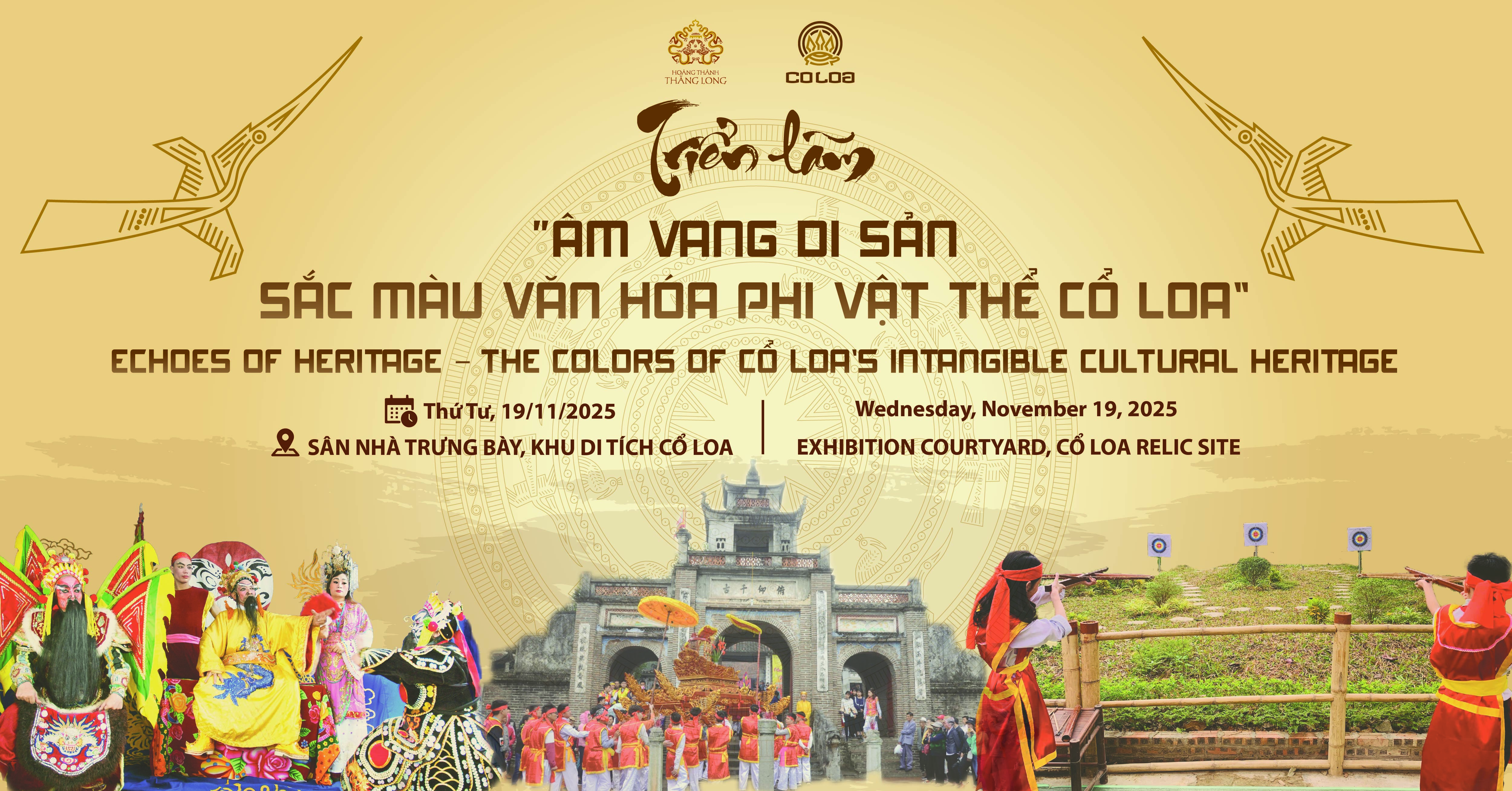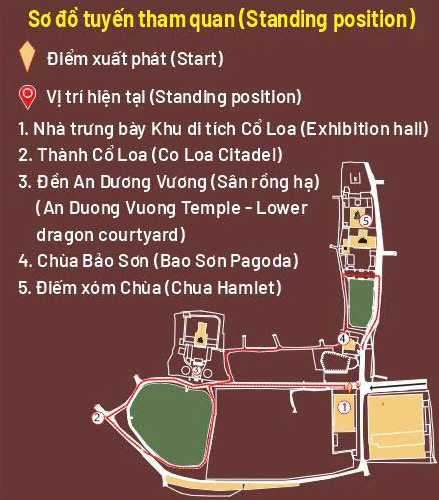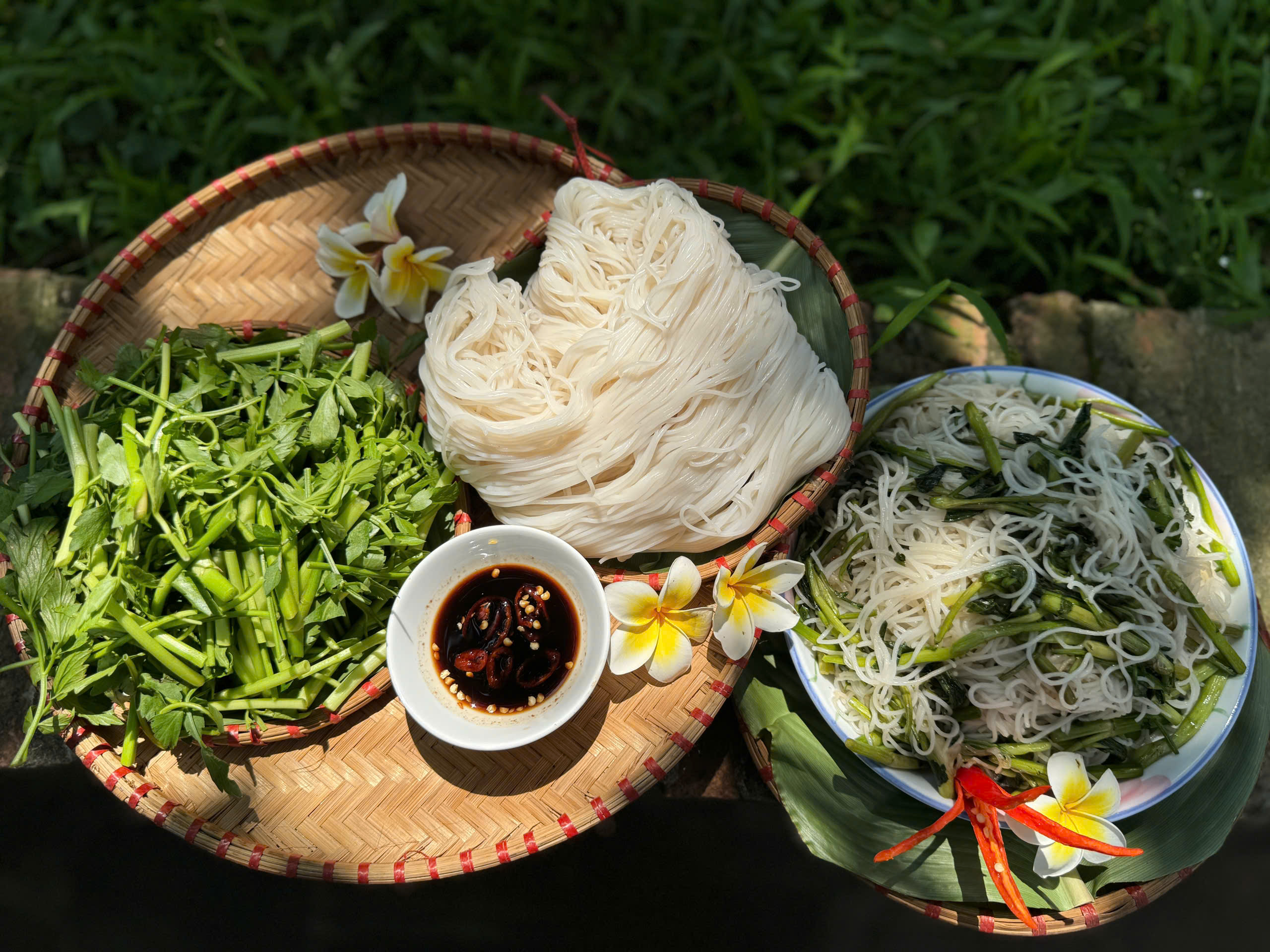
In the previous article, you learned about the originality and uniqueness of the artifact the pair of stone dragons handrails of the Upper Temple (Cổ Loa), during the Lê Trung hưng Dynasty. In this paper, we invite you to continue learning about the uniqueness of the artifact.
The unique form of the pair of handrails in the upper temple (Cổ Loa) is shown in the very special carvings, typical of the sculptural art of the Le Trung Hung dynasty in the early 18th century. The dragon statue here is in a winding position from top to bottom, with its head raised high. The dragon's body is round, curved in 5 soft sections. The dragon's curves, although soft, have turned into a V-shape, no longer retaining the pouch-like curve of the dragon of the Ly - Tran dynasties. The dragon on the handrails of An Dương Vương temple has a high nose, big ears, long horns and forks like deer horns. The carvings are sturdy, with prominent features such as a beard, mane, and fire clouds stretching straight in the "blade" style typical of dragons in the Lê Trung hưng dynasty. Eastern folklore uses the theory of "tam đình cửu tự" (a body with three sections: head, body, tail, combined with nine different features of nine real animals to create "cửu tự" (nine features), including: horns like a deer, head like a camel, eyes like a demon, body like a snake, belly like a clam, scales like a carp, claws like an eagle, feet like a tiger, ears like a cow, to express that combined characteristic, and to explain the dragon's position as the master of all things, a symbol of royal power.
 The dragon's body curves and moves from top to bottom
The dragon's body curves and moves from top to bottom
The stone sculpture art of the Lê Trung hưng Dynasty on the pair of handrails created a vibrant work right at the temple of King An Dương (Upper Temple). Because of that special location, the Upper Temple is also considered the National Temple, where there is a legend about the royal palace of King An Dương, at the same time the center of metallurgy, bronze casting of the capital of Âu Lạc, where the national treasure is kept - the statue of King An Dương - the incarnation of the king who founded Âu Lạc in the early days of the country's establishment.
Unlike a pair of dragon handrails in the back of Kinh Thien Palace or the one in Lam Kinh, which have the typical appearance of the palace handrails, symbolizing royal power, the pair of stone dragons in the Upper Temple (Cổ Loa) has its own unique features, creating something special, that is, because the Upper Temple is a National Temple, there is a combination of the symbol of royal power (5-clawed dragon) and the 4-clawed dragon. It is also a symbol of the concept of "left male, right female", symbolizing yin and yang; there is growth and development, which is a concept with philosophical significance from the early days of the Vietnamese nation's founding.

The "bát bửu" (Eight Treasures) pattern on the western handrail's pedestal, marked DT.TB01
The images of the "bát bửu" (Eight Treasures) on the western dragon pedestal, a combination of Taoism and Buddhism, have created spiritual harmony and religious philosophy, reflecting the artistic thought of the times, associated with the desire for a happy and fulfilling life, sending the wishes of the ancients to the gods. These decorative motifs have created the difference between the steps of the Upper Temple and the known steps in religious and spiritual relics in Vietnam.
Please watch part 3: National treasure – A pair of stone dragon handrails in the Upper Temple (Cổ Loa), Lê Trung Hưng dynasty (Artifacts with typical cultural and historical values).
MANAGEMENT DEPARTMENT OF CỔ LOA VESTIGE SITE








